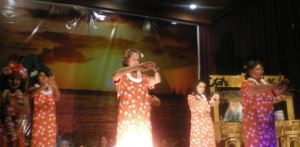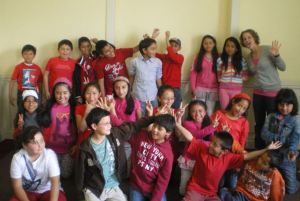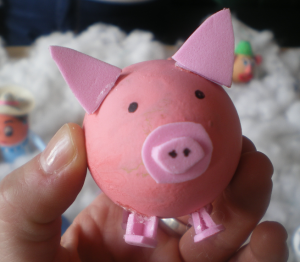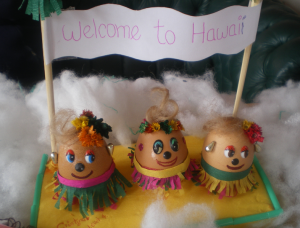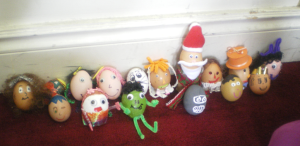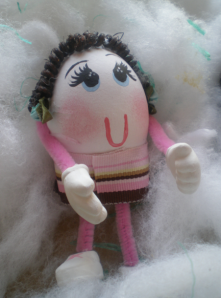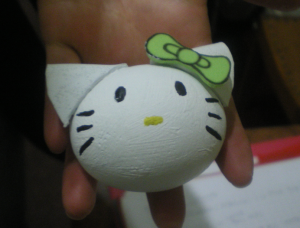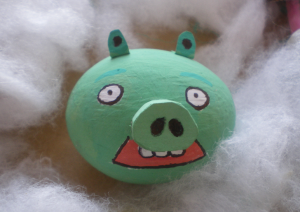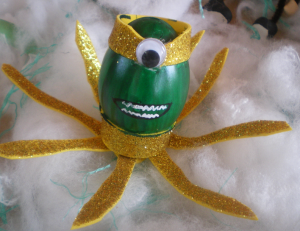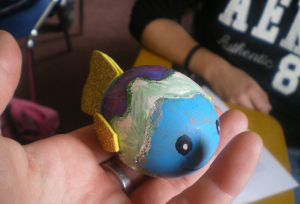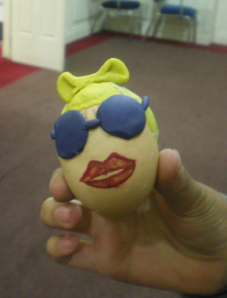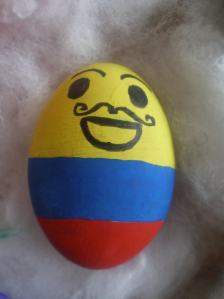Oh my goodness . . . how did it get to the point where I only had 32 days left in Ecuador? The days seem to be going by rather quickly and it’s already June! Eek!
While many of you have read about my roller coaster of emotions and the period of time when I did not enjoy Ecuador, now I am loving many things in this amazing country. (See? I am a roller coaster!) So, I thought I’d make a list of the things that are special about Ecuador, so you can get a small taste of why I love living here these days. Here we go!
Top 10 Best Things about Ecuador
10: THE VALUE OF A DOLLAR In Ecuador, it is amazing how far a dollar can go. The other volunteers and I have discussed how valuable even 25 cents can be these days. Here are some examples of what I can buy with a dollar: 1 taxi ride, a soda and a small snack, 4 quimbolitos (a tasty cake-like snack), 1 hamburger, 2 humitas, 5 bags of palomitas (my new, favorite sweet snack), 4 bus rides, 2 shoeshines, or a movie. Now, do you see why a dollar is so valuable here? I love it.
 9. “MAS O MENOS” Where do I begin with this phrase? To translate this phrase into English, is means “more or less.” This phrase is used so often and it displays the flexibility and relaxed atmosphere of the culture. For example, I could say, “Let’s meet for dinner at 7:00pm – mas or menos.” This would give us each about 15 minutes on either side of 7:00pm to meet. It makes things much less rushed and feels so nice to have as a part of my life these days.
9. “MAS O MENOS” Where do I begin with this phrase? To translate this phrase into English, is means “more or less.” This phrase is used so often and it displays the flexibility and relaxed atmosphere of the culture. For example, I could say, “Let’s meet for dinner at 7:00pm – mas or menos.” This would give us each about 15 minutes on either side of 7:00pm to meet. It makes things much less rushed and feels so nice to have as a part of my life these days. Look! You can even see how relaxed I am in the picture on the left!
Look! You can even see how relaxed I am in the picture on the left!
8. ALMUERZO This word means “lunch” in English, but has a totally different significance in Ecuador. While dinner is the biggest meal of the day in the U.S., it is lunch for Ecuadorians. Lunch always consists of soup, rice and juice. In addition to those staples, we usually have any combination of meat, chicken or fish, vegetables, plantains, and potatoes. The Ecuadorian family unit is represented well during this time of day. Many families leave work around 1:00pm and return to their house to have lunch together. This also means that oftentimes extended family comes over too. For example, in my house a typical lunch consists of the mom, dad, son, daughter-in-law, sister, empleada, and me. That’s a lot of people, but it’s pretty neat to see how everyone comes together in the middle of the day and returns to work around 3:00pm. I have often wondered what it would be like in the U.S. to leave work in the middle of the day to spend time with family and then return to work. Would it be a good thing to have a break from work mid-day? I think it might. 🙂
 7. TAXIS Riding in a taxi is always an adventure – for many reasons. First off, I might get a taxi driver that is very chatty, completely silent, or on occasion, drunk. But, what I have loved most is when I have gotten into a cab and the driver has his wife and child in the passenger seat. This might sound strange, but I think it is really sweet. It is an opportunity for the family to spend time together, during work hours. Also, you might find it interesting to know that 99% of taxis have a “carpet” on the dashboard and a small rug on the backseat. It is fascinating to see the style of carpeting each driver chooses . . . it shows his/her personality a bit. 🙂 And finally, driving in Ecuador is completely different than in the United States. There are dividing lines on some roads, but this is rare. Therefore, the drivers are able to “work it out” and know where and when to drive. This might seem unsafe at first, but I love it because everyone is aware of everything – so I think it’s safer overall. Plus, it’s not uncommon for someone to stop in the middle of the street, make a u-turn or do something else completely erratic – but because the other drivers expect the unexpected – they are ready for it. It’s pretty cool to see.
7. TAXIS Riding in a taxi is always an adventure – for many reasons. First off, I might get a taxi driver that is very chatty, completely silent, or on occasion, drunk. But, what I have loved most is when I have gotten into a cab and the driver has his wife and child in the passenger seat. This might sound strange, but I think it is really sweet. It is an opportunity for the family to spend time together, during work hours. Also, you might find it interesting to know that 99% of taxis have a “carpet” on the dashboard and a small rug on the backseat. It is fascinating to see the style of carpeting each driver chooses . . . it shows his/her personality a bit. 🙂 And finally, driving in Ecuador is completely different than in the United States. There are dividing lines on some roads, but this is rare. Therefore, the drivers are able to “work it out” and know where and when to drive. This might seem unsafe at first, but I love it because everyone is aware of everything – so I think it’s safer overall. Plus, it’s not uncommon for someone to stop in the middle of the street, make a u-turn or do something else completely erratic – but because the other drivers expect the unexpected – they are ready for it. It’s pretty cool to see.
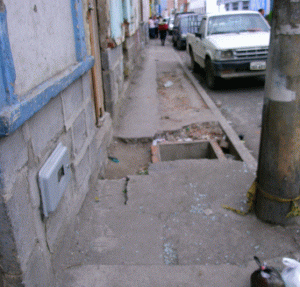 6. EXTREME SPORTS – AND SIDEWALKS What?!? Well, look at this picture of a sidewalk and you can understand why I categorize them with the extreme sports that are available in Ecuador. 🙂 Surprisingly, I have now found the challenge of walking to be charming. I never know if I have to hop over a hole, sidestep some dog poop or walk off of the sidewalk to avoid trash. Moving onto extreme sports . . . things such as bridge jumping, canyoning, and zip-lining are offered here. These are all fun activities, but a little crazy, if you ask me! Many of you saw this link on another post, but I figured I’d link it again just so show you all how lucky I am to still be alive here in Ecuador after trying an extreme sport. This was probably one of the scariest things I have ever done! This is called canyoning. Check this out!
6. EXTREME SPORTS – AND SIDEWALKS What?!? Well, look at this picture of a sidewalk and you can understand why I categorize them with the extreme sports that are available in Ecuador. 🙂 Surprisingly, I have now found the challenge of walking to be charming. I never know if I have to hop over a hole, sidestep some dog poop or walk off of the sidewalk to avoid trash. Moving onto extreme sports . . . things such as bridge jumping, canyoning, and zip-lining are offered here. These are all fun activities, but a little crazy, if you ask me! Many of you saw this link on another post, but I figured I’d link it again just so show you all how lucky I am to still be alive here in Ecuador after trying an extreme sport. This was probably one of the scariest things I have ever done! This is called canyoning. Check this out! 
5. BUS TRIPS Oh the bus trips in Ecuador! First off, check out this link to a bus schedule that has been very useful during my time in Ecuador. I love the bus system here because without it, I would have had very few travel opportunities. The buses are amazingly convenient and easy to navigate and are often an adventure. And, as I have mentioned before, vendors get on and off of the buses selling a wide-variety of items. From empanadas to ice cream . . . most everything can be purchased on a bus. (However, I have yet to see pizza being sold on bus yet, which I think would be a very wise item to sell!) Here is a picture of some corn on the cob I bought on the bus one day. 🙂 On a more embarrassing note, I must admit that I often feel motion-sick on buses have become best friends with Dramamine on most of my trips. However, the one time I chose not to use my best friend, I was the one on the bus that threw up. Yep. That was me . . . throwing up in a bag. Disgusting, I know.
 4: THE VARIETY OF FOOD AND DRINK SOLD ON THE STREET Ecuadorians take pride in their diverse cuisine. Therefore, most dishes are delicious and have been prepared with lots of love – and sometime with unclean hands – but . . . maybe that add to the occasional “uniqueness” of the cuisine. In all seriousness though, I really enjoy most Ecuadorian food. I can easily walk down the street and choose from a wide variety of foods and drinks such as: hamburgers, hot dogs, grilled plantains, pinchos (shish kebobs), candy apples, coconut juice, mangoes, tamales, ceviche (pictured to the left), salchipapas, humitas, quimbolitos, llapingachos, chocolate covered strawberries, juice, hornado, and candy. Generally, the food and drinks cost anywhere from 25 cents to one dollar. Can you see why this is one of my favorite things about Ecuador?
4: THE VARIETY OF FOOD AND DRINK SOLD ON THE STREET Ecuadorians take pride in their diverse cuisine. Therefore, most dishes are delicious and have been prepared with lots of love – and sometime with unclean hands – but . . . maybe that add to the occasional “uniqueness” of the cuisine. In all seriousness though, I really enjoy most Ecuadorian food. I can easily walk down the street and choose from a wide variety of foods and drinks such as: hamburgers, hot dogs, grilled plantains, pinchos (shish kebobs), candy apples, coconut juice, mangoes, tamales, ceviche (pictured to the left), salchipapas, humitas, quimbolitos, llapingachos, chocolate covered strawberries, juice, hornado, and candy. Generally, the food and drinks cost anywhere from 25 cents to one dollar. Can you see why this is one of my favorite things about Ecuador? 
3. SPANISH As many of you know, I have been trying to learn Spanish for awhile now. Trying. While I have developed an amazing friendship with my Spanish teacher and his family, I have to admit that I am not a good student. Learning a language is really hard for me! Plus, I go through phases when I study outside of class and other times when I don’t. But oftentimes, I just don’t make the time to learn Spanish other than during my class. With that being said, I have not learned as much Spanish as I would have liked during my time here, but maybe I’ll find some opportunities to practice when I return to St. Louis. Or, since I still have a month to learn . . . maybe I will maximize that. (The guy in the cartoon is exactly how I feel sometimes.)
 2. MOUNTAINS, VOLCANOES, WATERFALLS . . . AND MORE! OH, AND THAT FAMOUS PLACE CALLED THE GALAPAGOS. The flora and fauna in Ecuador is incredible. Ecuador’s mainland is unique because it has three specific areas: the coast (beaches), the sierra (mountains and volcanoes) and the oriente (the jungle). Plus, Ecuador also has the incredible Galapagos islands, which I had the pleasure to visit with a friend at the beginning of May. To the left is a picture of us with a tortoise. There is also a city nearby, called Banos, that I have enjoyed visiting. It is beautiful and there is always something different to experience in the city. For example, here is a video of some waterfalls I recently saw in Banos. Check out this and this. Amazing, huh?
2. MOUNTAINS, VOLCANOES, WATERFALLS . . . AND MORE! OH, AND THAT FAMOUS PLACE CALLED THE GALAPAGOS. The flora and fauna in Ecuador is incredible. Ecuador’s mainland is unique because it has three specific areas: the coast (beaches), the sierra (mountains and volcanoes) and the oriente (the jungle). Plus, Ecuador also has the incredible Galapagos islands, which I had the pleasure to visit with a friend at the beginning of May. To the left is a picture of us with a tortoise. There is also a city nearby, called Banos, that I have enjoyed visiting. It is beautiful and there is always something different to experience in the city. For example, here is a video of some waterfalls I recently saw in Banos. Check out this and this. Amazing, huh?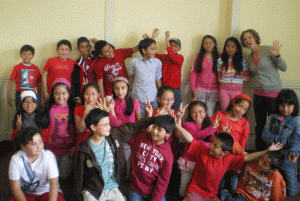
1. ECUADORIAN PEOPLE . . . PARTICULARLY MY STUDENTS Ecuadorians are amazing and (most) have a wonderful heart! The students I have had the pleasure of teaching these past 7 months have been wonderful. Their hearts are simply an extension of the Ecuadorian culture. For example, when you meet someone, say hello or goodbye, you always kiss the other person on the cheek. This is just one example of what many of you have heard of as a “hot-climate” culture. (By the way, if you want to learn a little more about that, click here.) My students and I have been able to learn together and have fun – at the same time. And, I don’t want you to think that all of the time has been rosy with my students, as there have definitely been some difficult moments. However, overall, the students that I have met are one of my favorite things about Ecuador. Oh, and it you’re bored today, here is a link to a video of me teaching my students. It is LONG because it was a requirement for me to videotape myself teaching for WorldTeach. Anyway . . . without a doubt – after the other 9 items on my top 10 list – Ecuadorians are by far the best thing about Ecuador. 🙂
Please write me a comment and I will read it and reply to you. Plus . . . I love hearing from you guys!
- If you were to write a “Top 10 List,” what would it be about and what would be #1?



